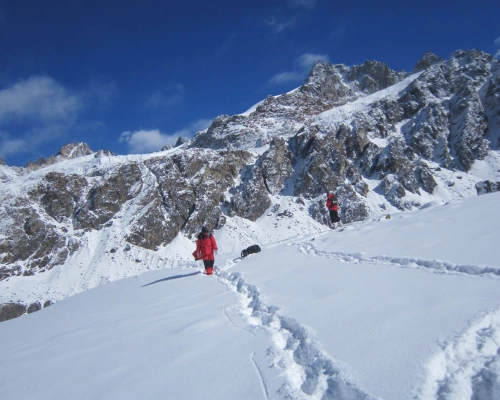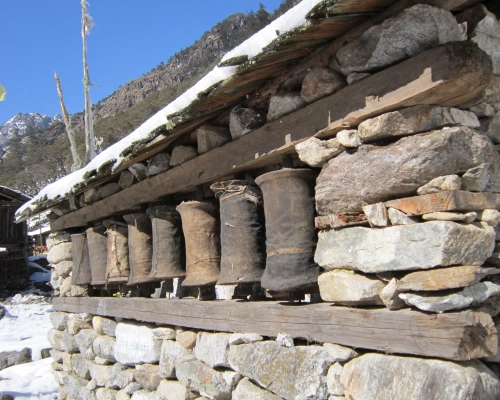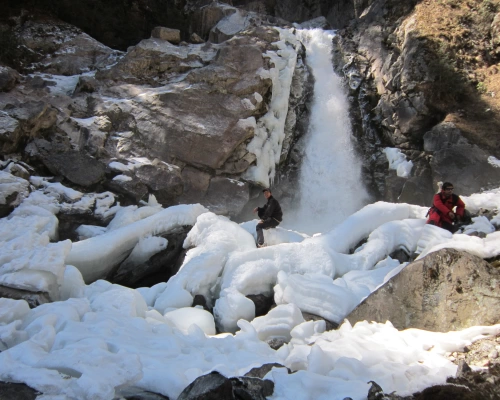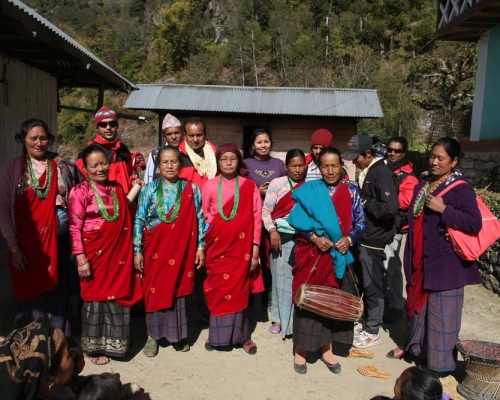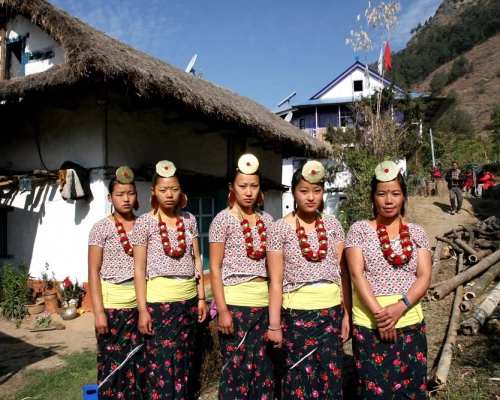Lumba Sumba Pass Trek is one of the newest Himalayan trekking trails introduced by the umbrella organization of the Trekking Agencies Association of Nepal (TAAN) only in 2012 with a group of 20 team members led by the first vice president of TAAN, Rana Bhadhur Khadka, in April. This relatively less frequented and known route is a part of the great Himalayan Trail that connects trekkers to not only one but two of the popular trekking regions of the country, the Kanchenjunga region and the Makalu region.
Though the Lumba Sumba Pass is the major attraction of the overall journey starting either from Makalu or Kanchenjunga, the trekking route to here offers unrivaled sightings of some of the world’s highest peaks, including Mt. Everest, Kanchenjunga, Makalu, and others, along with a breathtaking experience for trekkers, travelers, and climbers alike seeking remote and off-beaten experiences amidst the serene and tranquil Himalayas of Nepal.
The trekking trail to Lumba Sumba runs through the eastern Himalayas of the country along the bank of the Tamor and Arun River systems, home to diverse ethnic communities predominated by Rai, Limbu, and Sherpa people, showcasing and preserving their distinctive culture, traditions, and customs that go side by side with the natural beauty of the Kanchenjunga Conservation Area, boasting its diverse landscapes, from verdant green forests with dense temperatures and river valleys to alpine grasslands and rocky outcrops.
Trekkers on the way to Lumba Sumba Pass also get to visit several cultural heritages like monasteries, chhortens, temples, gompas, and prayer walls, giving a spiritual touch to the journey, along with the possibility of encountering rare Himalayan wildlife such as the elusive snow leopard, red panda, and variety of bird species playing hide and seek in the vibrant forests of pine, oak, and rhododendron.
Therefore, the Lumba Sumba Pass Trek is a golden opportunity to take yourself on an unforgettable adventure in the center of the Himalayas, offering a fantastic blend of untouched natural beauty, cultural richness, and physical challenge well matched by the serenity of the trails. It is an ideal choice for individuals looking forward to a holiday trip to the Himalayas in solitude, allowing an intimate connection with unspoiled nature and its majesty.
What makes the Lumba Sumba Pass Trek special?
It is no wonder that the Lumba Sumba Pass Trek is a captivating and demanding Himalayan Odyssey that stands out for its combination of spectacular Himalayan panorama of the major snow-capped peaks, cultural engagement, unspoiled natural beauty, and the sense of adventure and achievement of crossing one of the key mountain passes of Nepal, Lumba Sumba.
If you are planning something new and different for the year 2024/2025 in the Himalayas of Nepal, the Lumba Sumba Trekking is made just for you, promising you a journey of lifetime miles away for the hustle and bustle of modernity along the tranquil, remote, and peaceful route followed by the sublime feat of cultural immersion with the local communities of Sherpa and Rai coming together to craft you this special Himalayan pilgrimage to expect:
The remote and less crowded Himalayan Expedition Trail
Unlike many infamous trekking routes in the Nepalese Himalayas, such as the Everest Base Camp, the Annapurna Circuit Voyage, or the Annapurna Base Camp alpine jaunting, and others, the Lumba Sumba Pass Tour is located relatively in a more remote area that observes a comparatively smaller number of visitors, crafting a unique opportunity to explore pristine natural landscapes and typical culture with less human impact, guaranteeing a more soulful trekking experience in solitude.
The starting point of the Lumba Sumba Voyage is Taplejung, which is 45–60 minutes by air flight from Kathmandu to Suketar or Bhadrapur and an additional 8–10 hours then onwards covering at least 582.6 km, while you cover only approximately 110–120 km (68–75 miles) of trek distance, moving along the human settlements for several days scattered in the form of traditional mountain villages, monasteries, and schools, while there might be days when you might have to spend nights at camp, offering isolation like never before, an adventure to not miss at all for real daredevils.
To conclude, the Lumba Sumba Pass Trek is not only about a physical testament for an individual at high altitude but also about connecting with the untainted natural beauty and cultural richness of the Himalayas, allowing a more insider alpine experience in the Himalayas.
Dynasty views of the snow-capped mountain ranges in the Great Himalayan Trails
One of the key features of the Lumba Sumba Pass Trekking on the Great Himalayan Trail is the unique sight of the epic sky-towering giants. Adventurers throughout the entire journey to reach the pass are treated to the mythical, panoramic vistas of some of the world’s iconic snow-clad summits, such as Mt. Everest (8,848 m/the highest mountain range in the world), Mt. Kanchenjunga (8,856 m/the third largest peak on the planet), and Makalu (8,485 m/the fifth highest mountain giant on the earth).
These awe-inspiring views provide a majestic backdrop to the Lumba Sumba Pass Himalayan odyssey and keep you humble, motivated, and inspired throughout the journey as you move through diverse terrains, especially from the highly elevated viewpoints of the Kanchenjunga Conservation Area, free from extreme crowds. The sweeping grandeur of the Himalayas and the complete serenity and isolation of this remote trail make every encounter and moment memorable with nature’s magnificence.
Olangchung Gola, cultural, and historical sites on the way to Lumba Sumba Pass
Though the trekking route to Lumba Sumba Pass passes by several notable historical and cultural heritage sites of the region, Olangchung Gola is a significant highlight in the eastern part of Nepal in the Taplejung District. At an altitude of approximately 3,910 m/10,466 ft in the heart of the Himalayas, it has dominated the horizon and is often referred to as the hidden gem of the Kanchenjunga Himalayas, the gateway to the Himalayan beauty of the region, filled with lush forests, alpine meadows, and clear streams, along with the authentic culture, customs, and traditions of the natives, leaving you with an everlasting impression and initiating a transformative journey to the Lumba Sumba Pass.
Once a significant trading hub in ancient times between Nepal and Tibet, Olangchung Gola is also a spiritual center of the Kanchenjunga Trekking region, consisting of Deki Chholing Gompa, treasured by the locals who are primarily Sherpa and Tibetan communities and dating back more than 500 years, teaching and practicing the daily rituals of Buddhism, along with traditional Tibetan architecture with stone houses and intricately carved wooden windows and doors, which gives you an opportunity to find the real you amidst the vibrant murals, intricate carvings, and closer insight into the Himalayan lifestyle with one of the most mesmerizing views of the Himalayas.
The adventure and challenge en route to cross the Lumba Sumba Pass
Standing at an elevation of approximately 5,160 m/16,929 ft, the Lumba Sumba Pass is a natural corridor between two significant conservation areas, the Kanchenjunga Conservation Area and Makalu Barun Park, that rewards trekkers with unparalleled views of Mt. Everest, Kanchenjunga, and Makalu with an equal amount of physical, mental, and environmental challenges to overcome.
Although it does not involve technical climbing, a few sections of alpine rambling to Lumba Sumba can be arduous, quite rugged, and demanding, requiring some basic mountaineering skills and knowledge such as the use of crampons, trekking poles, and others in snow and ice at remote and high altitudes where you might have to push yourself beyond your own limit.
Particularly in this section of the overall jaunting is when the trekkers are more exposed to the altitude-prone area hence before you ascend to such a greater height it is advisable to be well acclimatized to the reduced level of air pressure and if see symptoms of altitude sickness or acute mountain sickness, it is not recommended to move for further height and descends to the lower region as soon as possible.
Nonetheless, with some advanced physical preparation, mental determination, and the guidance of reliable guides, you can make it through the Lumba Sumba Pass successfully, filling you with a profound sense of adventure and accomplishment with breathtaking scenery to remember for a lifetime.
The rich biodiversity of the Kanchenjunga Conservation Area (KCA)
Named after the third highest mountain giant on earth, Mt. Kanchenjunga, the Kanchenjunga Conservation Area is one of the protected areas of the country of hills and mountains, Nepal. Established in the year 1997 A.D., KCA encompasses approximately 2,035 square kilometers, spanning in altitude from 1,200 m to 8,586 m at the summit of Mount Kanchenjunga itself.
This protected area lies about 700 km/435 miles away from the capital city of the country, Nepal, and involves flights and driveways accompanied by trekking, inhabiting at least 250 species of avians and numerous rare and endangered wildlife such as the Himalayan black bear, blue sheep, musk deer, red panda, and others, along with the varying ecosystems from subtropical woodland in the Lower region to alpine meadows, sparse vegetation, and glacial areas in the upper Himalayas.
Therefore, the Kanchenjunga Conservation Area is considered a jewel of the eastern Himalayas because it possesses everything from deserted, rugged, and snowy alpine land to the stark contrast of lush forests of rhododendron, oak, pine, and fir forests. It is one of the major highlights of the trek to Lumba Sumba Pass, a true paradise for nature lovers, be they photographers, regular trekkers, or extra-spirited mountaineers.
The 18-day best itinerary and trekking route to Lumba Sumba Pass
The Lumba Sumba Pass Trek is an adventuresome 18-day Himalayan Odyssey that provides you with a unique opportunity to traverse through a remote part of the country and the scenic cultural and natural diversity of the Kanchenjunga and Makalu regions. The 18-day itinerary begins with an amazing flight from Kathmandu, either directly to Suketar or Bhadrapur based on the air traffic of that day, followed by a drive to Taplejung and Tapethok, the official trek starting points.
The trekking route to Lumba Sumba Pass then starts through the tropical and subtropical sections of Kanchenjunga, entering notable mountain dwellings such as Lelep, Ela Danda, Selep Kharka, Olangchung Gola, and Upper Langmale. After several days of alpine rambling through lush forests, beautiful villages, and rugged terrain, you will gradually ascend to higher altitudes, including pass camp and Chaurikhara, marking your footprints at the thrilling Lumba Sumba Pass.
Thereafter, the descent begins through Makalu Barun National Park, passing through the tranquil landscapes and remote Himalayan settlements that reveal the secret beauty of the region, like Thudam, Kharka, Chyamthang, Hatiya, and Gola, concluding at Tumlingtar, from where trekkers fly back to Kathmandu, offering a comprehensive and immersive experience through the varying landscapes and promising ample time for exploration, discovery, acclimatization, and safety.
This 18-day itinerary and trek route allows deep cultural engagement with local communities and the biodiversity of both the Kanchenjunga Conservation Area and Makalu National Park, all nestled in the stunning Himalayan ranges, presenting a balanced adventure, solitude, and physical and mental stimulation, and hence is considered one of the best itineraries and trekking routes to the Great Himalaya Trail.
Further, the 18-day itinerary can be extended or reduced as per your needs, time constraints, budget plans, preferences, and specific area of interest, even for 2024–2025, or you can get your personally customized trekking routes and itinerary at Adventure Himalayan Travels and Treks.
The 18-Day Lumba Sumba Pass Trek Cost 2024/2025
The trekking cost to the Lumba Sumba Pass can observe significant variation based on several deciding factors such as the level of service, size of the group of trekkers, type of tour operators, and precise inclusion and exclusion in the package that generally includes crucial services such as domestic flights to Bhadrapur and Tumlingtar to Kathmandu, permits and entrance fees for the Kanchenjunga Conservation Area and Makalu Barun National Park, guides and porter services cost, accommodation, and meals cost in tea houses or lodges during the trek.
At Adventure Himalayan Travels and Treks Pvt. Ltd., one of the leading, reputed, and locally based travel, trek, and tour operators, we offer one of the best trekking packages at the most affordable prices, whether you are seeking a budget-friendly Himalayan expedition such as the Ghorpani Poon Hill Trek, Helambu Voyage, and others, or a luxury trips to the Everest Base Camp and Back to Lukla via Helicopterincluding the Lumba Sumba Pass for 2024/2025, which is as follows:
- USD 2,140 for 1 pax
- USD 1,875 for 2-3 pax
- USD 1,800 for 4-6 pax
- USD 1,725 for 7-10 pax
Contact us now for a special group discount if you are a group of trekkers with more than 10 members!
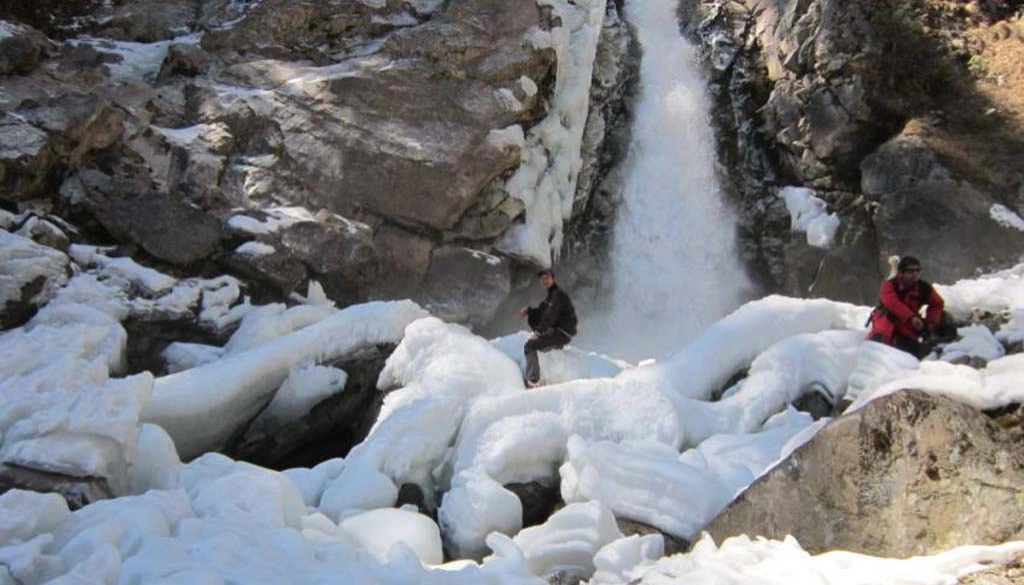
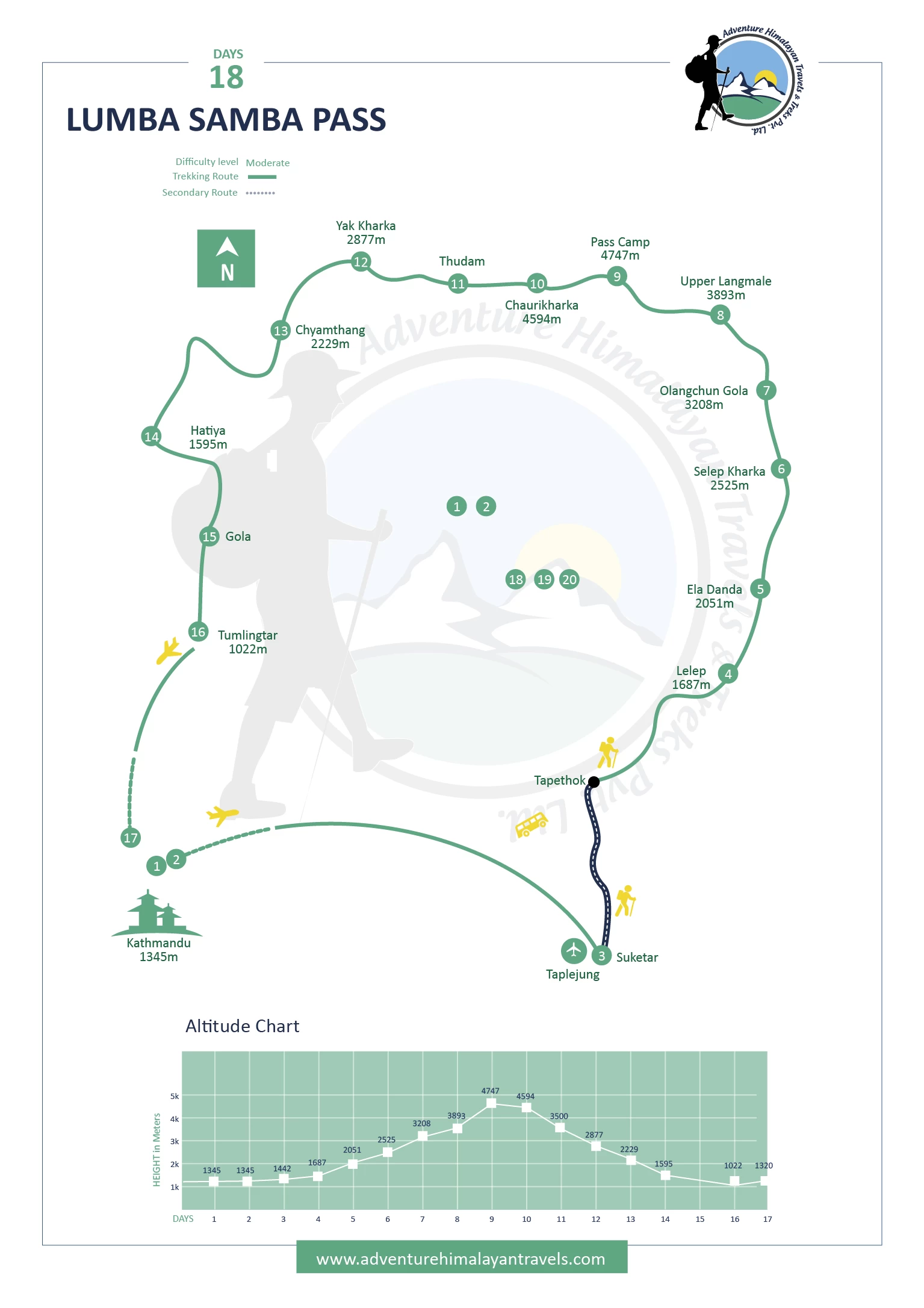
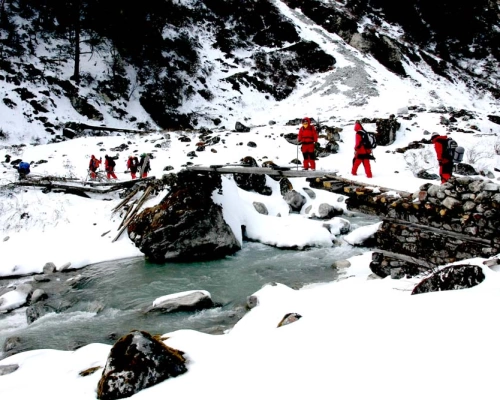
.webp)
